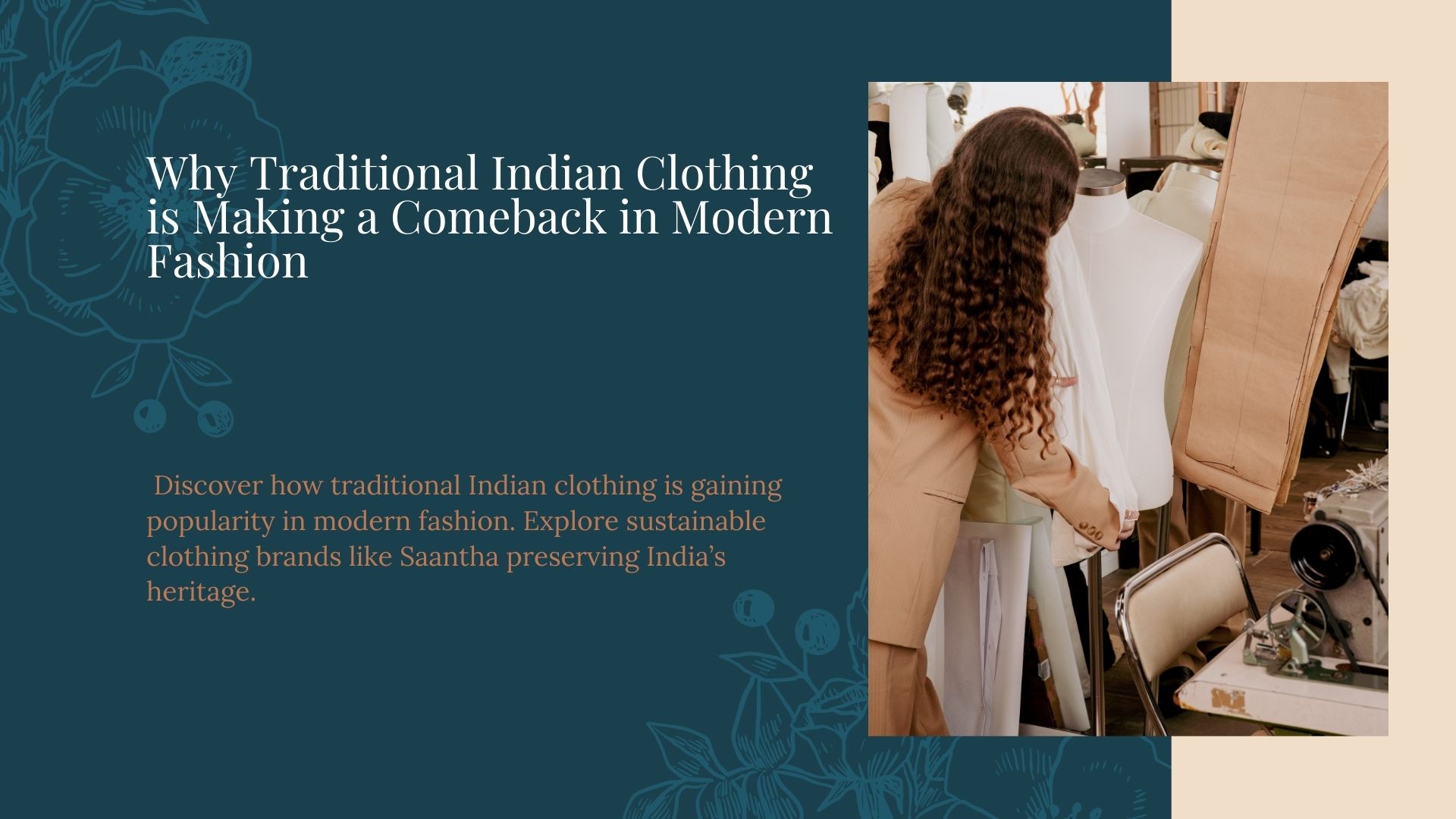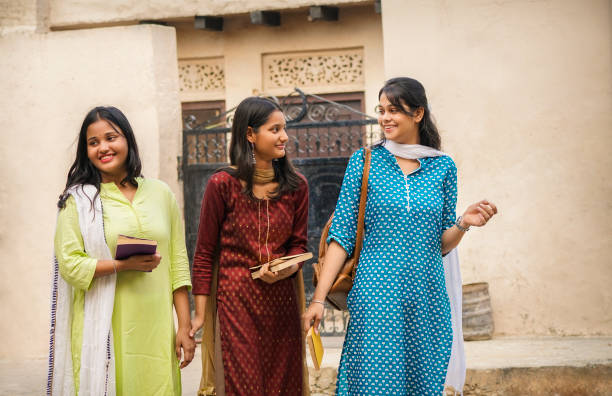
In recent years, traditional Indian clothing has experienced a resurgence in global fashion, with designers and fashionistas alike embracing the beauty and intricacy of garments that have stood the test of time. From the graceful sarees to the elegant lehengas, traditional attire is no longer reserved for special occasions, but is now making its way into everyday wardrobes, both in India and internationally.
The growing preference for traditional Indian clothing, especially in the fashion-forward world, can be attributed to several factors, including sustainability, cultural pride, and a desire for unique, handcrafted pieces. Brands like Saantha, a sustainable clothing brand, are at the forefront of this movement, promoting traditional attire that blends heritage with modern sensibilities. Let’s delve deeper into why traditional Indian clothing is making a strong comeback and how it’s redefining the way we view fashion today.
The Influence of Sustainability on Fashion
Sustainability has become a major factor in shaping modern fashion trends. As consumers grow more aware of the environmental impact of fast fashion, the demand for eco-friendly and ethically sourced clothing has surged. Saantha, a sustainable clothing brand dedicated to preserving India's cultural heritage, perfectly exemplifies this shift. Their collection of traditional Indian clothing not only celebrates the artistry of local artisans but also promotes the use of organic materials, reducing the carbon footprint of their products.
Traditional Indian clothing is inherently sustainable. The techniques used in creating garments like sarees, kurtas, and lehengas often involve handloom weaving, natural dyeing, and other eco-friendly processes. These practices, passed down through generations, result in timeless pieces that outlast trends and can be worn for years to come. Unlike fast fashion, which often prioritizes cheap, disposable clothing, traditional Indian garments offer durability, quality, and a deep connection to the environment.
Cultural Pride and Preservation of Heritage
Traditional Indian clothing is not just about fashion; it’s also about celebrating culture and heritage. As globalisation accelerates, many people are looking for ways to reconnect with their roots, and clothing is an excellent medium for doing so. Wearing traditional Indian attire, whether at a wedding, a festival, or a casual event, allows individuals to showcase their cultural identity and pride.
Saantha, with its focus on empowering local artisans and preserving the craftsmanship of traditional textile techniques, plays a vital role in keeping India’s rich cultural heritage alive. Each piece of clothing tells a story, often rooted in the artisan’s community, traditions, and family history. By wearing these garments, people not only embrace Indian culture but also support the artisans who work tirelessly to maintain these age-old practices.
The revival of traditional Indian clothing, especially with the involvement of brands like Saantha, ensures that these cultural treasures are not lost to time. In fact, the fusion of traditional designs with modern aesthetics makes them even more relevant in today’s fashion scene, allowing young people to proudly wear their heritage while staying on-trend.
The Rise of Modern Interpretations of Traditional Indian Clothing
While traditional Indian clothing carries significant cultural weight, it has also evolved to fit modern tastes. Contemporary designers are reimagining classic garments, blending traditional craftsmanship with cutting-edge fashion trends. This fusion has opened up new possibilities for traditional attire, making it more versatile and appealing to younger generations.

For example, sarees, once reserved for formal occasions, are now being styled in more casual, everyday ways. By pairing them with crop tops or experimenting with different draping styles, the saree is now a fashion statement that can be worn in a variety of settings, from the office to a casual outing. Similarly, lehengas and kurtas are being reinterpreted with bold colors, innovative cuts, and unconventional fabric combinations, making them wearable in the modern world.
The evolution of traditional Indian clothing in this way has sparked a movement of personalization, where individuals can mix and match traditional pieces to suit their personal style. Sustainable clothing brands like Saantha cater to this need by offering handcrafted garments that can be customized to fit modern tastes, all while maintaining the essence of traditional artistry.
The Appeal of Unique, Handcrafted Clothing
In a world dominated by mass-produced garments, traditional Indian clothing stands out due to its intricate craftsmanship and attention to detail. Many of the traditional garments produced by brands like Saantha are handmade by skilled artisans using age-old techniques. This craftsmanship adds a level of uniqueness that cannot be replicated by industrial production processes.
The appeal of handcrafted clothing is undeniable. Each piece carries the marks of its creator, making it one-of-a-kind. Whether it’s the intricate embroidery of a lehenga or the delicate weaving of a saree, traditional Indian clothing offers something that mass-market apparel simply cannot – individuality and soul.
Consumers are increasingly seeking out these unique pieces, not just for their beauty but also for the story behind them. Wearing handcrafted traditional Indian clothing from brands like Saantha becomes a way to celebrate both personal style and the artistry of the craftspeople who create these garments.
The Global Appeal of Traditional Indian Clothing
As the world becomes more interconnected, traditional Indian clothing is gaining recognition beyond the borders of India. International fashion shows, social media influencers, and even Hollywood celebrities have been spotted wearing Indian attire, contributing to the growing popularity of these garments.
Global fashion has also started embracing the rich textures, patterns, and colors that are characteristic of traditional Indian clothing. Designers are using traditional Indian fabrics like khadi, silk, and cotton in their collections, often with a modern twist. This fusion of East and West has led to a more widespread appreciation for traditional Indian clothing, which is now seen as a symbol of both cultural richness and high fashion.
Conclusion: The Future of Traditional Indian Clothing
The resurgence of traditional Indian clothing in modern fashion is a powerful movement that blends sustainability, cultural pride, and individual expression. Brands like Saantha are playing a key role in bringing these garments back into the mainstream, offering eco-friendly, handcrafted pieces that celebrate India’s heritage. As more people embrace the beauty and sustainability of traditional attire, the future of these garments looks bright, proving that fashion is not just about following trends, but about preserving and celebrating the cultures that shape us.
By supporting sustainable clothing brands and choosing traditional Indian clothing, we can be part of a movement that values authenticity, creativity, and the planet. Traditional attire is not just making a comeback; it’s reclaiming its rightful place in the world of modern fashion.